

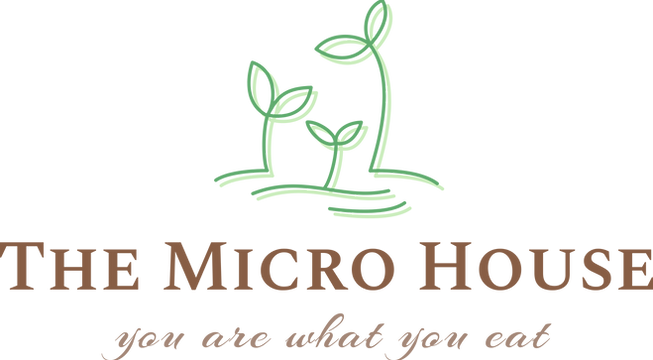
Locally grown microgreens with no pesticides.
We grow specifically to order and service Townsville region.

What are microgreens?
They are small but punch well above their weight!
Microgreens are
-
A (cotyledon) stage between sprouts and baby greens.
-
Natural functional food: health promoting or disease preventing food.
-
Whole food / Super food.
-
Substantially more nutrient dense than their adult counterparts.
-
Rich in natural antioxidants.
-
Higher content of vitamins, carotenoids than mature vegetables.
-
Higher content of carotenoids, chlorophyll and organic acids than sprouts.
-
Some should be used daily as superfoods or functional foods
-
Fun to eat and full of flavours!
For citation of above mentioned and health benefits of microgreens throughout this webpage, please refer to the list at the end of this webpage.
Microgreens vs. Sprouts
- Both young vegetables / herbs
- Both contain high levels of nutrients
Microgreens
Eat leaves / stems only
Grown in aerated environment with light
1-3 weeks to harvest
Extra nutrients from photosynthesis
VS.
Sprouts
Eat seeds, hulls, stems and roots
Grown in dark, moist environment
3-5 days to harvest
Scroll down to see our varieties

Snow Pea Tendrils Microgreens
-
High in fibre
-
Vitamins A, B, C, E and K / minerals
-
Enhance immunity system
-
Antioxidants, dietary fibre, folic acid, thiamine and niacin
-
Reduce the risk of heart disease
-
Reduce the risk of chronic eye diseases
-
Improve blood pressure control, gut health and aid weight loss
-
Higher in phylloquinone (vitamin K1) than most of other microgreens
-
1.8 times higher vitamin C than spinach leaves
-
beta-carotene (provitamin A) concentration comparable to carrots.
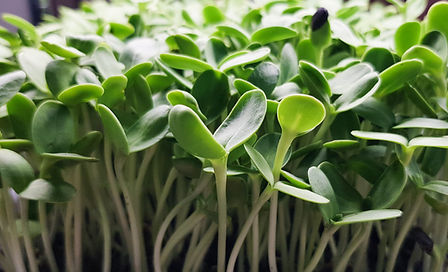
Sunflower
Microgreens
-
24-30% protein
-
High in fibre, total phenol, total antioxidant activity, essential fatty acids, vitamin A, B, C, D and E
-
Essential amino acids: calcium, phosphorous, iron, iodine, potassium, magnesium
-
Trace elements: zinc, manganese, copper, chromium
-
A richer source than dry seeds due to action of enzymes that takes place when germinating
-
Enhance immunity system
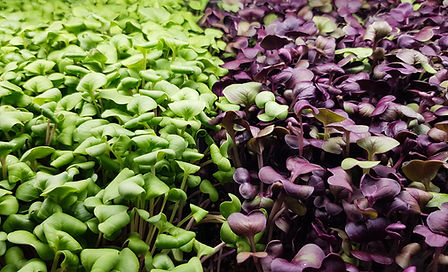
Pink stem / Purple Radish Microgreens
-
Cruciferous vegetable!
-
Super microgreens!
-
Vitamins A, B, C, E and K / minerals
-
Potential anti-cancer properties, antioxidants
-
Enhance immunity system
-
Promote cardiovascular/digestive/skin health
-
1.5 times greater than the recommended dietary allowance of vitamin C
-
3 times higher than spinach leaves
-
equal or higher than adult broccoli
-
-
High in tocopherol (vitamin E)
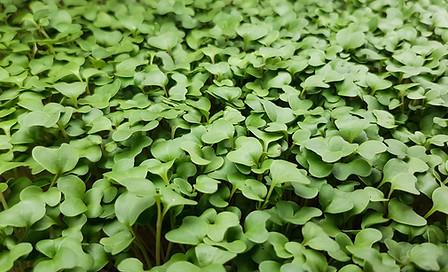
Broccoli
Microgreens
-
Cruciferous vegetable!
-
Super microgreens!
-
Vitamins A, B, C, E and K / minerals
-
Calcium, magnesium, phosphorous, iron, copper and zinc
-
High concentration of Sulforaphane (anti-cancer compound), antioxidants
-
Enhance immunity system
-
Reduce the risk of heart disease and diabetes
-
Higher levels of magnesium, manganese, copper and zinc than mature broccoli (hydroponically / soil grown)
-
Higher levels of phosphorous, potassium, iron, calcium, sodium plus above (Mg, Mn, Cu, Z) than mature broccoli (soil grown)
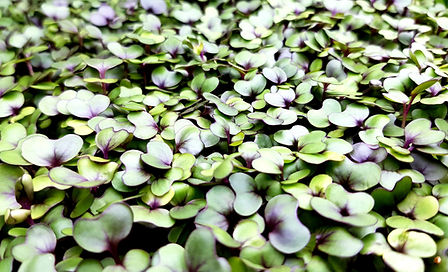
Red Cabbage Microgreens
-
Cruciferous vegetable!
-
Super microgreens!
-
Vitamins A, B, C, E and K / minerals
-
Potential anti-cancer properties, antioxidants
-
Enhance immunity system
-
Reduce the risk of diabetes, heart/eye diseases
-
260 times more beta-carotene (provitamin A) than adult red cabbage
-
70 times more phylloquinone (vitamin K1) than adult red cabbage.
-
6 times more ascorbic acid (vitamin C) than adult red cabbage:
-
2.4 times greater than the estimated average requirement
-
5 times greater than spinach leaves
-
1.6 times higher than adult broccoli
-
-
40 times more vitamin E than adult red cabbage
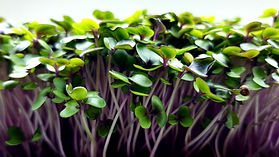
About Us
WHY MICROGREENS?
Sunae worked as a chef for 7 years when she first moved to Australia. While working at various hotels and restaurants, she came across Micro herbs (they were called micro herbs back then as most varieties available in Australia were herbs) and used them as garnishes on a regular basis.
The issues of microgreens then were that they were mostly used for decoration purposes on plates in restaurants and hotels, and the quality of greens were often bad with breakdown due to long process and transit time. Restaurants after having to pay high values for those greens, had to go through some wastage.
Here she is growing microgreens of a variety of vegetables and ready to provide fresh and quality products to her local clients. Microgreens are not only for restaurants but also great for home uses (it's about time they become public!).
Microgreens and their health benefits are fairly well known in some other countries but here in Australia, they have only recently gained popularity in larger cities. Sunae feels grateful that she can offer these highly nutritious and stunning looking produces to her Townsville locals.
Look forward to seeing you all!
Sunae, The owner and grower of TMH :)


References
1. Dalal, N., Siddiqui, S., and Neeraj. (2020). Evaluation of effects of chemical treatments on sensory attributes of sunflower microgreens with storage
2. Khoja., KK., Buckley, A., Aslam, MF., Sharp, PA., and Latunde-Dada, GO. (2020). Wojdylo et al. (2020): Sprouts vs. Microgreens as Novel Functional Foods: Variation of Nutritional and Phytochemical Profiles and Their In Vitro Bioactive Properties
3. Truzzi., F., Whittaker, A., Roncuzzi, C., Saltari, A., Levesque, MP., and Dinelli, G. (2021). Wojdylo et al. (2020): Sprouts vs. Microgreens as Novel Functional Foods: Variation of Nutritional and Phytochemical Profiles and Their In Vitro Bioactive Properties
4. Weber., CF. (2017). Broccoli Microgreens: A Mineral-Rich Crop That Can Diversify Food Systems
5. Wojdylo, A., Nowicka, P., Tkacz, K., and Turkiewicz, IP. (2020). Sprouts vs. Microgreens as Novel Functional Foods: Variation of Nutritional and Phytochemical Profiles and Their In Vitro Bioactive Properties
6. Xiao, Z., Lester, GE., Luo, Y., and Wang, Qin. (2012). Assessment of Vitamin and Carotenoid Concentrations of Emerging Food Products: Edible Microgreens




